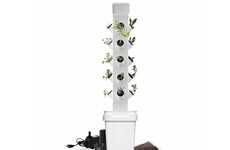In Kayago, Uganda, a killer weed has returned, decimating fishing grounds and clogging waterways. The weed, also known as the water hyacinth, is a beautiful lavender flowering menace, which doubles in mass every two weeks and deprives organisms living in the water of life-sustaining oxygen.
A few years ago, scientists fought the deadly weed by introducing tiny weevils called “snout beetlesâ€, into the water to feed on the plant. The beetles only eat the hyacinths, so they are no danger to other aquatic plants in the area. This time, a “prolonged drought†will hinder this method of controlling the hyacinth.
African Killer Weeds
Water Hyacinths Decimate Fisheries
Trend Themes
1. Invasive Weed Infestation - The rapid growth and spread of water hyacinths in Uganda highlight the need for innovative solutions to control invasive plant species.
2. Ecological Imbalance - The water hyacinth's impact on aquatic ecosystems and fisheries calls for disruptive innovations in sustainable fisheries management.
3. Biological Pest Control - Exploring alternative methods, such as introducing natural predators like snout beetles, presents opportunities for disruptive innovation in weed control strategies.
Industry Implications
1. Environmental Services - The water hyacinth infestation creates opportunities for environmental service companies to develop innovative solutions for weed management and ecological restoration.
2. Aquaculture and Fisheries - The devastating effects on fisheries provide an opening for the aquaculture and fisheries industry to adopt disruptive technologies and practices for sustainable production and combating aquatic weed infestations.
3. Biological Pest Control - The water hyacinth invasion in Uganda presents a potential market for companies specializing in biological pest control, offering innovative solutions for tackling invasive plant species.






